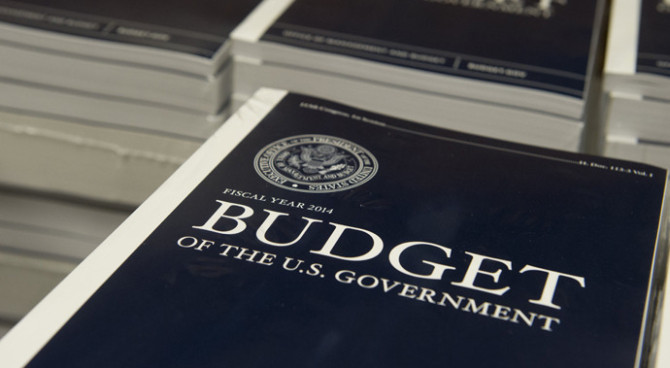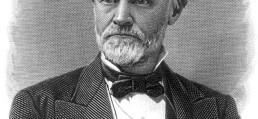Today’s tech titans, like yesterday’s industrial giants, will diminish in time thanks to competition.
The resurgence of progressivism in America has brought growing support for a return to Progressive-era trustbusting. Sen. Elizabeth Warren has a plan to break up tech companies like Google, Amazon and Facebook. Berkeley professor Robert Reich, once the resident progressive of the Clinton administration, opines, “Like the robber barons of the first Gilded Age, those of the second”—the tech giants—“have amassed fortunes because of their monopolies.” Even in Amazon’s hometown of Seattle, a newspaper headline declares, “Big tech needs to face a Theodore Roosevelt -style trust busting.”
According to progressive legend, when trusts and cartels in the late 19th century exploited consumers, trustbusters rode to the rescue. Today’s progressives are ready to reincarnate yesteryear’s remedies. The problem with this narrative is that it has little basis in fact.
If the Gilded Age was plagued by anticompetitive behavior, the data should show output falling and prices rising in monopolized industries. In a 1985 study, economist Thomas DiLorenzo tested this hypothesis for industries accused of being monopolistic during the debate on the Sherman Antitrust Act of 1890. He found that output in those industries actually increased by an average of 175% from 1880-90—seven times the growth rate of real gross national product. On average, prices in the so-called monopolized industries fell three times as fast as the consumer-price index. When it comes to the progressive itch to attack large firms, a famous line comes to mind: “Ignorance lies not in the things you don’t know, but in the things you know that ain’t so!”
Steel output grew by 242% from 1880-90, but during the 10 years after the Sherman Act, it grew by only 135%. Other “monopolized” industries with large differences in growth rates in the decades before and after the Sherman Act include copper (330% vs. 133%), petroleum (74% vs. 39%), refined sugar (65% vs. 48%) and cigars and cigarettes (121% vs. 40%).
Prices tell a similar story. On average, in the industries for which data are available, inflation-adjusted prices fell at a faster rate, or rose at a slower rate, in the decade before the Sherman Act than in the decade after it. The real price of steel rails fell by 43% from 1880-90, but fell by only 0.7% from 1890 to 1900. The wholesale price of sugar fell 22.4% from 1880-90 but fell by only 6.1% from 1890-1900. A similar pattern played out for copper, pig iron and anthracite coal.
In reality, the turn of the 20th century was an era of vigorous industrial competition driven by the implementation of new technologies, new sources of supply, and improved management. Economies of scale produced industrial concentration. Most of the trusts and cartels that subsequently formed to keep out competition gradually failed without any government intervention.
The history of the American Sugar Refining trust, which formed in 1887, illustrates this pattern. The Sugar Trust had only fleeting success at limiting production or raising prices over the ensuing 20 years. U.S. refined-sugar production more than doubled from 1887 to 1907. Despite the trust’s efforts to keep them out, competitors built factories and undercut its prices in less time than it took to prosecute a major antitrust lawsuit. In 1893, when the Grover Cleveland administration filed its first Sherman antitrust suit against American Sugar, the margin between the prices of raw and refined sugar was 1.15 cents a pound. By the time the Supreme Court decided the case in 1895, new competitors had driven the margin down to 0.88 cent a pound—a 23% decrease.
Unlike the trusts, tariffs and regulations actually succeeded in squelching competition in the Gilded Age. Standard Oil benefited from tariffs on oil and refined products. Henry Havemeyer, the first president of American Sugar, stated at a congressional hearing in 1899 that “the mother of all trusts is the customs tariff bill. . . . Without the tariff, I doubt if we should have dared to take the risk of forming the trust.”
The first legislative action of the trustbusting era came with the establishment of the Interstate Commerce Commission in 1887 to regulate rail freight rates. Economist George Hilton and historian Gabriel Kolko found that railroads supported federal regulation because their attempts to stabilize rates through cartels had repeatedly failed. Real rail freight revenues fell 17.7% per ton-mile from 1870-90. The Interstate Commerce Act banned price rebates, the mechanism the overbuilt railroad system had used to reduce prices. When trucks began to compete with the railroads, Congress brought trucking under ICC regulation. Whatever its initial impact or intent, over time evidence mounted that transportation regulation actually impeded competition.
By the 1970s, the anticompetitive effects of economic regulation, especially in transportation, were acknowledged by progressives from Ralph Nader to economist Alfred Kahn. In the greatest deregulatory effort of the 20th century, President Jimmy Carter led the opening of competition in the railroad, airline and trucking industries. Peer-reviewed economic studies have consistently shown that the transportation deregulation of the Carter era produced significant price reductions and improvements in service.
The rise of Big Tech is virtually a replay of the rise of scale-driven industrialization at the turn of the 20th century. We’ve seen rapid growth of large firms fueled by technological innovation and economies of scale accompanied by declining prices. This time around, extraordinarily, the new “monopolies” are giving many of their products away.
There are legitimate policy concerns involving Big Tech, such as claims of censorship. But history shows little evidence that breaking up big tech companies or regulating them as monopolies will benefit consumers. Before policy makers repeat the failed experiments of the past, they should determine whether trustbusting is really about protecting consumers or merely about expanding the power of government.
Mr. Gramm, a former chairman of the Senate Banking Committee, is a visiting scholar at the American Enterprise Institute. Mr. Ellig, a former chief economist at the Federal Communications Commission, is a research professor at the George Washington University Regulatory Studies Center.



